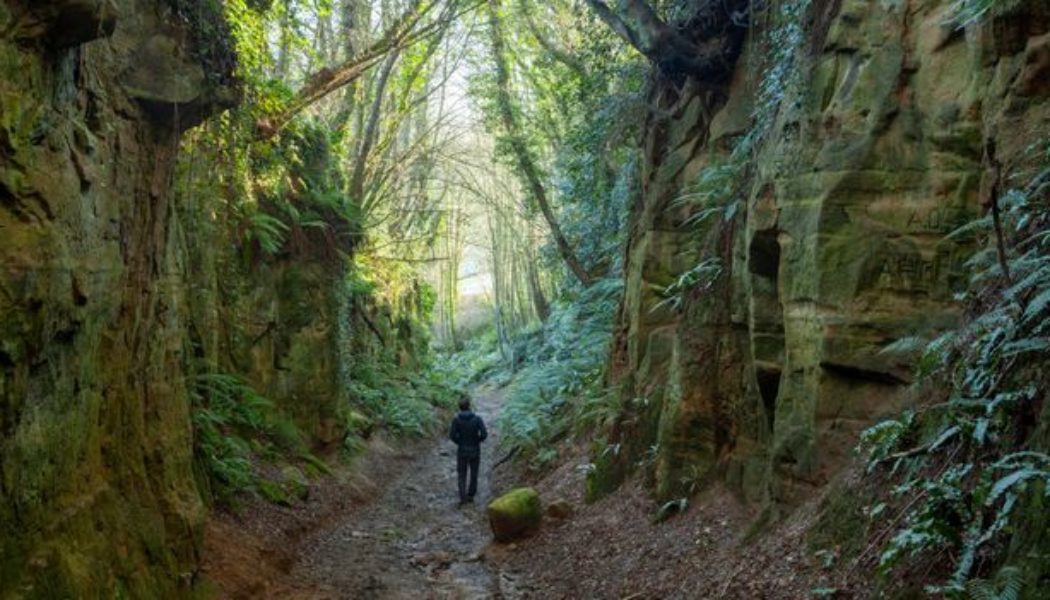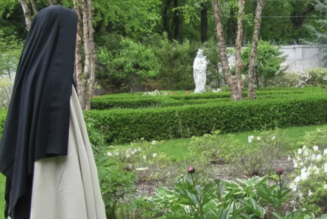
The unique atmosphere of the holloways leads even scientific minds into states of treasure-seeking wonder. For Jefferies, the holy grail is goblin’s gold, a vivid green moss that glows in the dark like a carpet of emeralds. It’s been spotted in Hell Lane, which is connected to Shute’s Lane, before, and he remains hopeful he can find it – although, as he noted sadly, it’s not been seen since the 1960s.
It’s not just rare plants that make their homes here. Badgers and rabbits have been seen on camera traps using holloways as highways between woodland areas, and the earthen walls of Shute’s Lane were clearly pockmarked with tiny holes where mason bees made their nests. “Insects, fungi, bryophytes; they all like these damp, stable conditions,” Jefferies said. “We’ve counted at least three amber-listed [threatened in the UK] bird species: dunnock, song thrush and bullfinch. There is likely to be more.”
As they get older and more deeply trodden, holloways become wider at the bottom than they are at the top. Looking up, this gives the impression that the walls are closing in. The sides burrow out laterally to expose balls of roots, making trees appear half-suspended in mid-air. It contributes to the impression of being in a hidden chamber, perceiving the overworld from forbidden angles like a glitch in a video game. “It makes you wonder,” said Jefferies, as we passed one of these knotted tangles of roots supporting a giant ash tree, “is it the wall holding the tree up, or the other way around?”.
Just as intriguing as the holloways’ unique ecology is their rich human history. Although they are difficult to age with certainty, some appear to link the sites of ancient settlements dating to the Saxon and Roman periods, and perhaps even as far back as the Iron Age. For archaeologists like Cummings, they are a fascinating example of how humans have long shaped the landscape. “Shute’s Lane and Hell Lane cover a distance of around 1.3 miles,” she said. “They are likely to have existed first and foremost as the primary route between settlements at Symondsbury and North Chideock but may also have been important for the transportation of building stone from a long-since closed quarry on the nearby hill.”







![Erdő vs. Tagle: the battle to be the next pope [Catholic Herald paywall]…](https://salvationprosperity.net/wp-content/uploads/2022/08/erdo-vs-tagle-the-battle-to-be-the-next-pope-catholic-herald-paywall-327x219.jpg)
